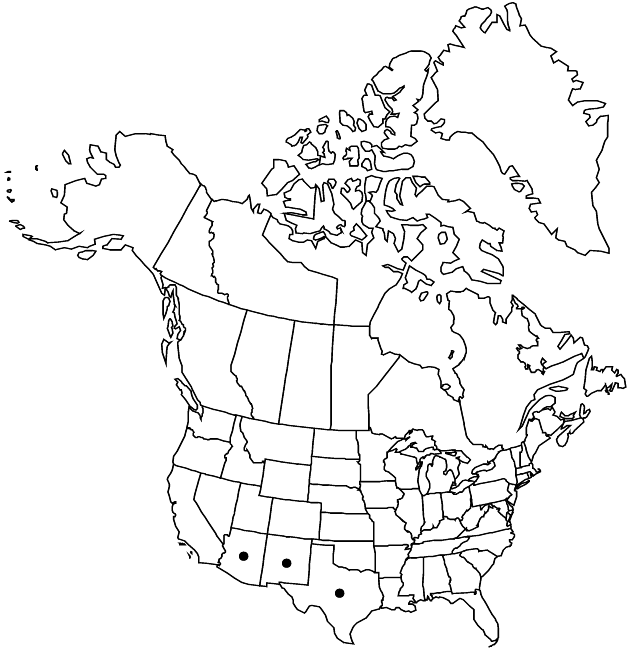Difference between revisions of "Zinnia acerosa"
Smithsonian Contr. Knowl. 3(5): 105. 1852.
FNA>Volume Importer |
FNA>Volume Importer |
||
| Line 30: | Line 30: | ||
|elevation=700–1900 m | |elevation=700–1900 m | ||
|distribution=Ariz.;N.Mex.;Tex.;Mexico (Chihuahua;Coahuila;Durango;Nuevo León;San Luis Potosí;Sonora;Zacatecas). | |distribution=Ariz.;N.Mex.;Tex.;Mexico (Chihuahua;Coahuila;Durango;Nuevo León;San Luis Potosí;Sonora;Zacatecas). | ||
| − | |discussion=<p>Attribution of Zinnia acerosa to Utah (S. L. Welsh et al. 1993) was based on Atwood et al. 9704 (BRY), from Moab, Grand County; the specimen was indicated as “possibly cultivated” by the collector, and it is well outside the known range of the species.</p> | + | |discussion=<p>Attribution of <i>Zinnia acerosa</i> to Utah (S. L. Welsh et al. 1993) was based on Atwood et al. 9704 (BRY), from Moab, Grand County; the specimen was indicated as “possibly cultivated” by the collector, and it is well outside the known range of the species.</p> |
|tables= | |tables= | ||
|references= | |references= | ||
| Line 54: | Line 54: | ||
|publication year=1852 | |publication year=1852 | ||
|special status= | |special status= | ||
| − | |source xml=https://jpend@bitbucket.org/aafc-mbb/fna-data-curation.git/src/ | + | |source xml=https://jpend@bitbucket.org/aafc-mbb/fna-data-curation.git/src/8f726806613d60c220dc4493de13607dd3150896/coarse_grained_fna_xml/V19-20-21/V21_156.xml |
|tribe=Asteraceae tribe Heliantheae | |tribe=Asteraceae tribe Heliantheae | ||
|subtribe=Asteraceae (tribe Heliantheae) subtribe Ecliptinae | |subtribe=Asteraceae (tribe Heliantheae) subtribe Ecliptinae | ||
Revision as of 16:32, 18 September 2019
Subshrubs, to 16 cm (rounded or flat-topped). Stems greenish to gray, much branched, pilose. Leaf blades 1-nerved, linear to acerose, 8–20 × 1–2 mm, scabrous to glabrescent. Peduncles 5–35 mm. Involucres campanulate, 3–5 × 5–7 mm. Phyllaries suborbiculate to oblong, becoming scarious proximally, appressed-hairy distally, apices obtuse, ciliate. Paleae uniformly yellow, apices obtuse, erose. Ray florets 4–7; corollas usually white, sometimes pale yellow, laminae oblong to suborbiculate, 7–10 mm. Disc florets 8–13; corollas yellow or tinged with purple (drying reddish), 3–6 mm, lobes 1 mm. Cypselae 2.4–4 mm, 3-angled (ray) or compressed (disc), ribbed, strigose or distally ciliate; pappi usually of 1–3 unequal awns, sometimes reduced to teeth. 2n = 20, 40, or 22.
Phenology: Flowering spring–fall.
Habitat: Rocky open slopes, flats, calcareous soils
Elevation: 700–1900 m
Distribution

Ariz., N.Mex., Tex., Mexico (Chihuahua, Coahuila, Durango, Nuevo León, San Luis Potosí, Sonora, Zacatecas).
Discussion
Attribution of Zinnia acerosa to Utah (S. L. Welsh et al. 1993) was based on Atwood et al. 9704 (BRY), from Moab, Grand County; the specimen was indicated as “possibly cultivated” by the collector, and it is well outside the known range of the species.
Selected References
None.